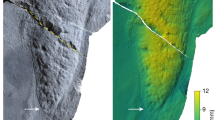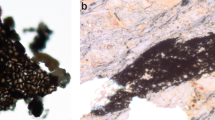Abstract
RECENTLY I sent you a short communication (June 6, p. 353) on Merlia normani, the siliceous sponge with a supplementary calcareous skeleton, stating that it was of a double nature, and consisted of a sponge living in symbiosis with a chlorophyll-containing organism. Further, I stated that the name Merlia normani would have to be applied to the latter. I am glad to find, however, that this transfer of the name is not necessary, and that the sponge will continue to be called Merlia normani.
This is a preview of subscription content, access via your institution
Access options
Subscribe to this journal
Receive 51 print issues and online access
$199.00 per year
only $3.90 per issue
Buy this article
- Purchase on Springer Link
- Instant access to full article PDF
Prices may be subject to local taxes which are calculated during checkout
Similar content being viewed by others
Author information
Authors and Affiliations
Rights and permissions
About this article
Cite this article
KIRKPATRICK, R. Merlia normani and its Relation to Certain Palæozoic Fossils. Nature 89, 502–503 (1912). https://doi.org/10.1038/089502c0
Issue Date:
DOI: https://doi.org/10.1038/089502c0
This article is cited by
-
Sclerite-bearing alveolitid favositids from the Devonian of central Poland
Paläontologische Zeitschrift (1993)
-
Cyanophycean nature of stromatoporoids
Nature (1976)
Comments
By submitting a comment you agree to abide by our Terms and Community Guidelines. If you find something abusive or that does not comply with our terms or guidelines please flag it as inappropriate.



